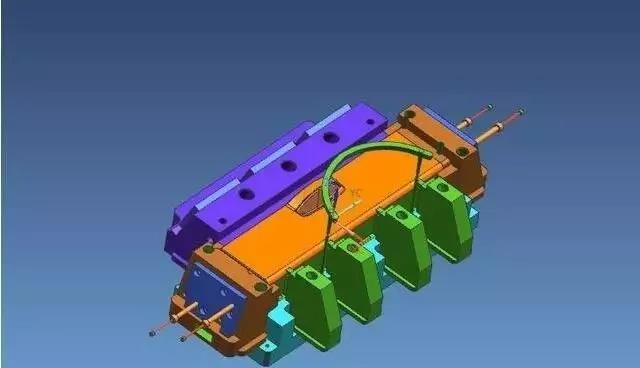©Copyright 2019 SIKO POLYMERS (SUZHOU) CO., LTD All rights reserved.Site Map Powered by iwonder.cn
- Email Uskevin@sikopolymers.com


Injection mold design
Mold industry is a basic industry in the manufacturing industry, is the basis of the transformation of technological achievements, and itself is an important field of high-tech industry, in Europe and the United States and other industrial developed countries known as "iron into gold" "magnetic industry".
American industry believes that "mold industry is the cornerstone of American industry"; Germany considers it a "key industry" of all industries; Japan Die and Mould Association also believes that "die and mould is the power to promote social prosperity and affluence", but also "the secret of the entire industrial development", is "the driving force to enter the rich society".

First, die opening direction and parting line
At the beginning of the design of each injection product, the opening direction and parting line should be determined first to ensure that the core-pulling slider mechanism is minimized and the influence of parting line on appearance is eliminated.
1. After the direction of die opening is determined, the structure of stiffeners, buckles and bulges of the product shall be designed as consistent as possible with the direction of die opening, so as to avoid core-pulling, reduce sewing lines and prolong the life of the die.
2, after the opening direction is determined, the appropriate parting line can be selected to avoid the reverse of the opening direction, so as to improve the appearance and performance.
Two, remolding Angle
1, the appropriate demoulding slope can avoid product hair (drawing). The demounding slope of smooth surface should be ≥0.5 degrees, fine leather (sand) surface is greater than 1 degree, rough leather surface is greater than 1.5 degrees.
2, the appropriate demoulding slope can avoid top injury, such as top white, top deformation, top broken.
3. When deep cavity structure products are designed, the slope of the outer surface should be greater than the slope of the inner surface as far as possible, so as to ensure that the mold core is not biased when injection molding, and the uniform product wall thickness is obtained, and the material strength of the opening part of the product is guaranteed.
Three, product wall thickness
1, all kinds of plastics have a certain wall thickness range, generally 0.5 ~ 4mm, when the wall thickness exceeds 4mm, will cause too long cooling time, resulting in problems such as shrinkage, should consider changing the product structure.
2, uneven wall thickness will cause surface shrinkage.
3, uneven wall thickness will cause pores and weld marks.
Four, reinforcement
1, the reasonable application of reinforcement, can increase the rigidity of the product, reduce deformation.
2, the thickness of the reinforcement must be less than or equal to (0.5 ~ 0.7)T product wall thickness, otherwise the surface shrinkage.
3, the single-side slope of the reinforcement should be greater than 1.5° to avoid the top injury.
Five, the rounded corners
1, rounded corner is too small may cause product stress concentration, resulting in product cracking.
2, rounded corner is too small may cause mold cavity stress concentration, resulting in cavity cracking.
3, set a reasonable rounded corner, can also improve the processing technology of the mold, such as the cavity can be directly processed with R knife milling, and avoid low efficiency of electrical processing.
4, different rounded corners may cause the movement of parting line, should be combined with the actual situation to choose different rounded corners or clear corners.
Six, hole
1, the shape of the hole should be as simple as possible, generally round.
2. The axial direction of the hole is consistent with the direction of the die opening, which can avoid core pulling.
3. When the length-diameter ratio of the hole is greater than 2, the demoulding slope should be set. The diameter of the hole should be calculated according to the footpath size (maximum solid size).
4. The length-diameter ratio of blind holes generally does not exceed 4. Anti-hole needle punching and bending
5. The distance between the hole and the edge of the product is generally greater than the aperture size.